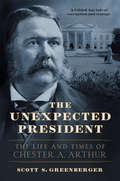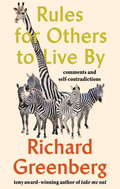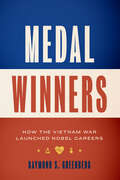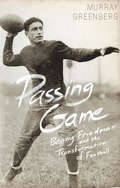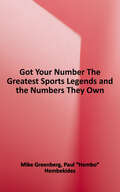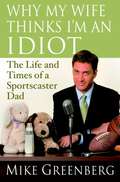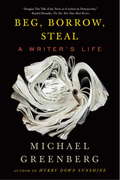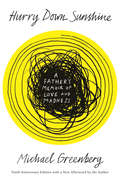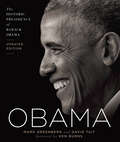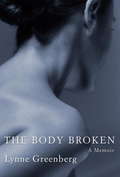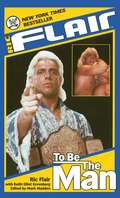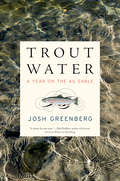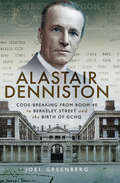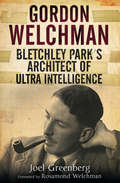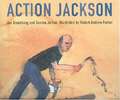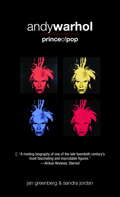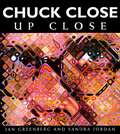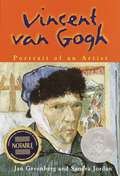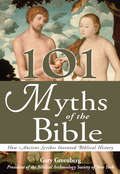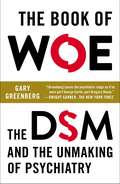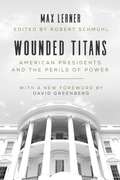- Table View
- List View
The Unexpected President: The Life and Times of Chester A. Arthur
by Scott S. GreenbergerNobody expected the vice president, a New York political hack, to be president. And after President James A. Garfield was shot in 1881, nobody expected Chester A. Arthur to become a strong and effective president, a courageous anti-corruption reformer, and an early civil rights advocate. And yet...Despite his promising start as a young man, by his early fifties Chester A. Arthur was known as the crooked crony of New York machine boss Roscoe Conkling. For years Arthur had been perceived as unfit to govern, not only by critics and the vast majority of his fellow citizens but by his own conscience. As President James A. Garfield struggled for his life, Arthur knew better than his detractors that he failed to meet the high standard a president must uphold.And yet, from the moment President Arthur took office, he proved to be not just honest but brave, going up against the very forces that had controlled him for decades. He surprised everyone--and gained many enemies--when he swept house and took on corruption, civil rights for blacks, and issues of land for Native Americans.A mysterious young woman deserves much of the credit for Arthur's remarkable transformation. Julia Sand, a bedridden New Yorker, wrote Arthur nearly two dozen letters urging him to put country over party, to find "the spark of true nobility" that lay within him. At a time when women were barred from political life, Sand's letters inspired Arthur to transcend his checkered past--and changed the course of American history.This beautifully written biography tells the dramatic, untold story of a virtually forgotten American president. It is the tale of a machine politician and man-about-town in Gilded Age New York who stumbled into the highest office in the land, only to rediscover his better self when his nation needed him.
Rules for Others to Live By: Comments and Self-Contradictions
by Richard GreenbergBetween stressing about his theater friends and reconciling his complicated feelings about an inconsistently wonderful New York City, Tony Award-winning playwright and Pulitzer finalist Richard Greenberg also maintains a reputation for being something of a hermit. He takes the time to privately process the absurdity of the world outside, and the result is this hysterically funny and daringly thoughtful collection of original essays. In Rules for Others to Live By, he shares lessons from his highly successful writing career, observations from two long decades of residence on a three-block stretch of Manhattan, and musings from a complicated and occasionally taxing social life. Firmly sympathetic to the struggles of the more bizarre and unstable among us, Greenberg tackles a range of topics--from the difficulties of friendship to the art of writing, the pain of heartbreak to the curiously unpredictable weather of his neighborhood, and the moderate hypochondria that comes with age, as well as the more serious health crises that unfortunately also come with age. In essays that are at turns quietly subversive and thoroughly hopeful and life-affirming, Greenberg's distinct and hilarious voice articulates our own mild obsessions and the idiosyncrasies that we can only hope will go unnoticed in a crowd.From the Hardcover edition.
Medal Winners: How the Vietnam War Launched Nobel Careers
by Raymond S. GreenbergAs the ground war in Vietnam escalated in the late 1960s, the US government leveraged the so-called doctor draft to secure adequate numbers of medical personnel in the armed forces. Among newly minted physicians’ few alternatives to military service was the Clinical Associate Training Program at the National Institutes of Health. Though only a small percentage of applicants were accepted, the elite program launched an unprecedented number of remarkable scientific careers that would revolutionize medicine at the end of the twentieth century. Medal Winners recounts this overlooked chapter and unforeseen byproduct of the Vietnam War through the lives of four former NIH clinical associates who would go on to become Nobel laureates. Raymond S. Greenberg traces their stories from their pre-NIH years and apprenticeships through their subsequent Nobel Prize–winning work, which transformed treatment of heart disease, cancer, and other diseases. Greenberg shows how the Vietnam draft unintentionally ushered in a golden era of research by bringing talented young physicians under the tutelage of leading scientists and offers a lesson in what it may take to replicate such a towering center of scientific innovation as the NIH in the 1960s and 1970s.
Medal Winners: How the Vietnam War Launched Nobel Careers
by Raymond S. GreenbergAs the ground war in Vietnam escalated in the late 1960s, the US government leveraged the so-called doctor draft to secure adequate numbers of medical personnel in the armed forces. Among newly minted physicians’ few alternatives to military service was the Clinical Associate Training Program at the National Institutes of Health. Though only a small percentage of applicants were accepted, the elite program launched an unprecedented number of remarkable scientific careers that would revolutionize medicine at the end of the twentieth century. Medal Winners recounts this overlooked chapter and unforeseen byproduct of the Vietnam War through the lives of four former NIH clinical associates who would go on to become Nobel laureates. Raymond S. Greenberg traces their stories from their pre-NIH years and apprenticeships through their subsequent Nobel Prize–winning work, which transformed treatment of heart disease, cancer, and other diseases. Greenberg shows how the Vietnam draft unintentionally ushered in a golden era of research by bringing talented young physicians under the tutelage of leading scientists and offers a lesson in what it may take to replicate such a towering center of scientific innovation as the NIH in the 1960s and 1970s.
Passing Game: Benny Friedman and the Transformation of Football
by Murray GreenbergBenny Friedman, the son of working class immigrants in Cleveland's Jewish ghetto, arrived at the University of Michigan and transformed the game of football forever. At the time, in the 1920s, football was a dull, grinding running game, and the forward pass was a desperation measure. Benny would change all of that.In Ann Arbor, the rookie quarterback's passing abilities so eclipsed those of other players that legendary coach Fielding Yost came back from retirement to coach him. The other college teams had no answer for Friedman's passing attack. He then went pro-an unpopular decision at a time when the NFL was the poor stepchild to college football-and was equally sensational, eventually signing with the New York Giants for an unprecedented $10,000, bringing fans and attention to the fledgling NFL.Passing Game rediscovers this little-known sports hero and tells the story of Friedman's evolution from upstart to American celebrity, in a vivid narrative that will delight and enlighten football fans of all ages.
Got Your Number: The Greatest Sports Legends and the Numbers They Own
by Mike GreenbergESPN personality (Get Up and #Greeny) and New York Times bestselling author Mike Greenberg partners with mega-producer Hembo to settle once and for all which legends flat-out own which numbers. In short essays certain to provoke debate between and amongst all generations, Greeny uses his lifetime of sports knowledge to spin yarns of the legends among the legends and tell you why some have claimed their spot in the top 100 of all time. <p><p>Sports and numbers go hand in hand. Sports and loud, assertive debate? Even better. Cheering on, agonizing over, and being in plain awe of your favorite players has left you with a deep and intricate memory of their greatness, not to mention well-honed arguments as to why your favorites are really the best. In arenas, in front of your TV, and in bars, you’ve debated friends and strangers alike. You’ve joyfully mocked your friends’ (sometimes laughable) favorites. You’ve spouted accomplishments, statistics: Yours won six titles, batted .350 in the clutch, or generated 82% of their team’s scoring. <p><p>But not all numbers are created equal. Some are accomplishments. Others are identity. Looming large over any image you have of an athlete: the number on their jersey. Numbers often provide the most visceral parts of any sports legend’s identity. They are what people remember—worldwide. Jordan, Jeter, Brady—to fans, they are as much their number as they are anything else. Sure, 1 through 100 might seem like a large range, but fierce competition across the ages has blessed only a lucky few to claim one of these as their own. For some, the victors may not be so obvious. That’s why Greeny’s here to help. <p><p>Ascend into discussion, fans of all stripes. Come away enlightened. Or maybe a little enraged. Either way, you are sure to be occasionally surprised—and endlessly entertained. Whatever your sport, welcome to the place where all the arguments are finally decided, once and for all.
Why My Wife Thinks I'm an Idiot: The Life and Times of a Sportscaster Dad
by Mike GreenbergMeet Mike Greenberg, the popular host of ESPN Radio's Mike and Mike in the Morning, the highest-rated drive-time sports talk show on the dial. To his three-million-plus listeners, Greeny is the guy who's equally as comfortable dissecting zone defenses as he is discussing cashmere sweaters. He's been to Super Bowls and World Series, All-Star Games and Final Fours. He's interviewed Michael Jordan, Joe Montana, and Wayne Gretzky. He gets paid to enthuse about sports, which means he's the envy of most men in America. This is the hilarious, sometimes touching, and endlessly entertaining debut of one of America's fastest-rising sportscasters, a wry and revealing look at one man's good-hearted but mistake-prone attempt to grow up before his children do. Marriage, fatherhood, manhood, fame, athletes, crazed aunts with gambling problems, the true significance of sports, the worst possible thing to say in a room full of pregnant women-no topic is beyond his reach. But don't take our word on it, read what Greeny has to say about: * Dating: "People who reminisce fondly about dating are blocking out all the disasters and focusing only on the few great nights. If that is all you choose to remember, fine. But be aware that no experience is without good moments. I'm sure during the sacking of Rome there were a few decent nights; maybe they put on a play." * Life on the road: "Wife + television = no sleep." "No wife + no television = no sleep." "Wife + no television = sleep." "No wife + television = porn." * Keeping things in perspective: "Never assume you know more than the guy in the camouflage tux." * And, of course, marriage: "All of us are married to women who think we're idiots." Whether he's talking trash on the radio or talking dirty diapers over a fancy dinner, Greeny's determined to reconcile two halves of a whole. So if your enthusiasm has ever been curbed, or you're feeling remote without the remote, or you're just wondering what exactly goes on in a guy's brain, Why My Wife Thinks I'm an Idiot will be a source of comfort and unadulterated laughter.
Beg, Borrow, Steal: A Writer's Life
by Michael GreenbergIn Beg, Borrow, StealMichael Greenberg regales us with his wry and vivid take on the life of a writer of little means trying to practise his craft or simply stay alive. He finds himself doctoring doomed movie scripts; selling cosmetics from an ironing board in front of a women's department store; writing about golf, a game he has never played; and botching his debut as a waiter in a posh restaurant. Central characters include Michael's father, whose prediction that Michael's 'scribbling' wouldn't get him on the subway almost came true; his artistic first wife, whom he met in a Greenwich Village high school; and their son who grew up on the Lower East Side,fluent in the language of the street. Then there are Greenberg's unexpected encounters: a Holocaust survivor who, on his deathbed, tries to leave Michael his fortune; a repentant communist who confesses his sins; a man who becomes a woman; a Chilean film-maker in search of his past; and rats who behave like humans and ceaseto live underground. Hilarious and bittersweet, Greenberg's stories invite us into a world where the familial, the literary, the tragic and the mundane not only speak to one another, but deeply enjoy the exchange.
Beg, Borrow, Steal
by Michael GreenbergIn Beg, Borrow, Steal Michael Greenberg regales us with his wry and vivid take on the life of a writer of little means trying to practice his craft or simply stay alive. He finds himself doctoring doomed movie scripts; selling cosmetics from an ironing board in front of a women's department store; writing about golf, a game he has never played; and botching his debut as a waiter in a posh restaurant.Central characters include Michael's father, whose prediction that Michael's "scribbling" wouldn't get him on the subway almost came true; his artistic first wife, whom he met in a Greenwich Village high school; and their son who grew up on the Lower East Side, fluent in the language of the street and in the language of the parlor. Then there are Greenberg's unexpected encounters: a Holocaust survivor who on his deathbed tries to leave Michael his fortune; a repentant communist who confesses his sins; a man who becomes a woman; a Chilean filmmaker in search of his past; and rats who behave like humans and cease to live underground.Hilarious and bittersweet, Greenberg's stories invite us into a world where the familial, the literary, the tragic and the mundane not only speak to one another, but deeply enjoy the exchange.
Hurry Down Sunshine: A Memoir
by Michael GreenbergIn this extraordinary account of a loved one's madness and the effects it has on family, friends, caregivers and even fellow sufferers, Greenberg records his daughter Sally's journey as only a father can while still remaining completely honest with her and himself. <P><P>Even random comments by near-strangers become significant here, and as Sally struggles in an institution and again under outpatient care Greenberg makes it clear that as a family, community and society we share more madness than we dare to admit. His description of Sally's progress toward coherence through work in theater is especially moving. Annotation
Obama: The Historic Presidency of Barack Obama
by Mark Greenberg David M. TaitA vibrant celebration of President Obama in words and photographs, now updated with new material on the years since he left office. Through stunning images by White House photographers and others, as well as notable essays and quotes from a broad spectrum of people, this updated edition of Obama looks back at the president’s journey—from his remarkable victory to his significant milestones and final days in office to his life after the White House.Obama features rare and previously unseen photographs, along with iconic images and newspaper front pages. It also includes dramatic pictures—including the famous shot from the Situation Room as the president and his staff watched the live unfolding of the Osama bin Laden raid, and day-to-day images of Obama in his roles as world leader, policymaker, commander in chief, and father. There are lighthearted photos from the White House Correspondents’ Dinner, late-night television appearances, and moments with the entire Obama family. Sixteen additional pages follow President Obama in recent years campaigning for Democratic candidates, engaging in philanthropic work, and traveling the world. The expanded volume also updates the status of many of Obama’s groundbreaking achievements, such as the Affordable Care Act (aka Obamacare), the Iran nuclear deal, the Paris climate accord, EPA protections, transgender rights, DACA, and much more.
The Body Broken: A Memoir
by Lynne GreenbergAt 19, Greenberg narrowly survived a devastating car crash. When her broken neck healed, she was hailed as a medical miracle. But when an unbearable pain in her neck returned many years later, she and her family were forced to deal with a medical system ill-equipped to handle patients with chronic pain.
Ric Flair: To Be the Man
by Keith Elliot Greenberg Ric Flair"Woooooo!" With that triumphant cry, "Nature Boy" Ric Flair surpassed his predecessors and his peers to become one of the greatest professional wrestlers in history. To wrestling fans, the Nature Boy is a platinum-blond deity. A sixteen-time World Champion, "Slick Ric" could convince television viewers that a momentous life experience would pass them by if they missed an upcoming match. His opponents were challenged with this simple taunt: "To be the man, you have to beat the man."
Trout Water: A Year on the Au Sable
by Josh Greenberg"Josh Greenberg is my kind of nature writer."—The Wall Street Journal It's the beginning of trout fishing season, and Josh Greenberg — proprietor of one of the nation&’s most famous fishing outfitters, on America's most iconic trout-fishing stream, the Au Sable River in Michigan —is standing in the Au Sable at dusk when he gets the call that a dear fishing buddy has died. The solace he takes from fishing — from reading the movement of the river water, studying the play of the light, and relying on his knowledge of insect and fish life — prompts him to reflect on the impact of the natural world on his life in his fisherman&’s journal. Over the course of a year, the journal transcends fishing notes to include some beautifully lyrical nature writing, entertaining stories of the big one that got away, cheerful introspection about a love that&’s hard to explain, and yes, a tip or two. Eventually, Josh Greenberg realizes he hasn&’t been all alone in the woods, not really. Much of his relationship with his family and friends has played out on the river. And as he catches — and releases — trout after trout back into one of the most beautiful rivers in America, Greenberg comes to help us realize, too, that there&’s more to fishing than catching fish.
Alastair Denniston: Code-Breaking from Room 40 to Berkeley Street and the Birth of GCHQ
by Joel Greenberg“The expertly researched biography of the man who created and led the British intelligence organization best known for cracking the Nazi’s codes.” —Midwest Book Review Some of the individuals who played key roles in the success of Bletchley Park in reading the secret communications of Britain’s enemies during the Second World War have become well-known figures. However, the man who created and led the organization based there, from its inception in 1919 until 1942, has, surprisingly, been overlooked—until now. In 1914 Alastair Denniston, who had been teaching French and German at Osborne Royal Navy College, was one of the first recruits into the Admiralty’s fledgling codebreaking section that became known as Room 40. There, a team drawn from a wide range of professions successfully decrypted intercepted German communications throughout the First World War. After the Armistice, Room 40 was merged with the British Army’s equivalent section—MI1—to form the Government Code and Cypher School (GC&CS). Initially based in London, from August 1939, GC&CS was largely located at Bletchley Park, with Alastair Denniston as its Operational Director. With the support and assistance of both the Denniston family and GCHQ, Joel Greenberg, author of Gordon Welchman: Bletchley Park’s Architect of Ultra Intelligence, has produced this absorbing story of Commander Alexander “Alastair” Guthrie Denniston OBE, CBE, CMG, RNVR, a man whose death in 1961 was ignored by major newspapers and the very British intelligence organization that was his legacy. “An enthralling account of Alastair Denniston and his contribution to modern electronic intelligence. This book follows from his excellent biography of another great of signals intelligence, Gordon Welshman.” —Fire Reviews
Gordon Welchman: Bletchley Park's Architect Of Ultra Intelligence
by Joel GreenbergA magnificent biography which finally provides recognition to one of Bletchley’s and Britain’s lost heroes Michael Smith. The Official Secrets Act and the passing of time have prevented the Bletchley Park story from being told by many of its key participants. Here at last is a book which allows some of them to speak for the first time. Gordon Welchman was one of the Park’s most important figures. Like Turing, his pioneering work was fundamental to the success of Bletchley Park and helped pave the way for the birth of the digital age. Yet, his story is largely unknown to many. His book, The Hut Six Story, was the first to reveal not only how they broke the codes, but how it was done on an industrial scale. Its publication created such a stir in GCHQ and the NSA that Welchman was forbidden to discuss the book or his wartime work with the media. In order to finally set the record straight, Bletchley Park historian and tour guide Joel Greenberg has drawn on Welchman’s personal papers and correspondence with wartime colleagues which lay undisturbed in his son’s loft for many years. Packed with fascinating new insights, including Welchman’s thoughts on key Bletchley figures and the development of the Bombe machine, this is essential reading for anyone interested in the clandestine activities at Bletchley Park. As seen in the Kent and Sussex Courier, Dover Express, Folkestone Herald, Sevenoaks Chronicle, M.K. Pulse Magazine, The Vine Magazine and Vale Life Magazine.
Action Jackson
by Jan Greenberg Sandra JordanOne late spring morning the American artist Jackson Pollock began work on the canvas that would ultimately come to be known as Number 1, 1950 ("Lavender Mist"). Award-winning authors Jan Greenberg and Sandra Jordan use this moment as the departure point for a unique picture book about a great painter and the way in which he worked. Their lyrical text, drawn from Pollock's own comments and those made by members of his immediate circle, is perfectly complemented by vibrant watercolors by Robert Andrew Parker that honor his spirit of the artist without imitating his paintings. A photographic reproduction of the finished painting, a short biography, a bibliography, and a detailed list of notes and sources that are fascinating reading in their own right make this an authoritative as well as beautiful book for readers of all ages.<P><P> Winner of the Sibert Honor
Andy Warhol: Prince of Pop
by Jan Greenberg Sandra JordanThe Campbell’s Soup Cans. The Marilyns. The Electric Chairs. The Flowers. The work created by Andy Warhol elevated everyday images to art, ensuring Warhol a fame that has far outlasted the 15 minutes he predicted for everyone else. His very name is synonymous with the 1960s American art movement known as Pop. But Warhol’s oeuvre was the sum of many parts. He not only produced iconic art that blended high and popular culture; he also made controversial films, starring his entourage of the beautiful and outrageous; he launched Interview, a slick magazine that continues to sell today; and he reveled in leading the vanguard of New York’s hipster lifestyle. The Factory, Warhol’s studio and den of social happenings, was the place to be. Who would have predicted that this eccentric boy, the Pittsburgh-bred son of Eastern European immigrants, would catapult himself into media superstardom? Warhol’s rise, from poverty to wealth, from obscurity to status as a Pop icon, is an absorbing tale—one in which the American dream of fame and fortune is played out in all of its success and its excess. No artist of the late 20th century took the pulse of his time—and ours—better than Andy Warhol.
Chuck Close, Up Close
by Jan Greenberg Sandra JordanA biography of the revisionist artist who achieved prominence in the late 1960s for enormous, photographically realistic, black and white portraits of himself and his friends.
Vincent van Gogh: Portrait of an Artist
by Jan Greenberg Sandra JordanVincent van Gogh-- one of the 19th century' s most brilliant artists-- will forever be remembered as the Dutchman who cut off his ear. But this incident only underscores the passion that consumed him-- a passion that, when he took up painting at age 27, infused his work. Whether painting a portrait, a landscape, or a still life, van Gogh sought to capture the vibrant spirit of his subject. It didn't matter that others found his work too unconventional. Van Gogh persevered. And as he moved from the cold climate of Holland to balmy southern France, he pioneered a new technique and style. In a career spanning only a decade, van Gogh painted many great works, yet fame eluded him. This lack of recognition increased his self-doubts and bitter disappointments. Today, however, van Gogh stands as a giant among artists.<P><P> [This text is listed as an example that meets Common Core Standards in English language arts in grades 6-8 at http://www.corestandards.org.]<P> Winner of the Sibert Honor
Crusaders in the Courts: How a Dedicated Band of Lawyers Fought for the Civil Rights Revolution
by Jack GreenbergStory of the NAACP Legal Defense Fund
101 Myths of the Bible: How Ancient Scribes Invented Biblical History
by Gary GreenbergGreenberg, a lawyer who's also president of the Biblical Archaeology Society of New York, explores how the myths and legends of neighboring cultures are built into the foundations of the modern monotheistic religions. He describes a long and continuous relationship between ancient Israel and Egypt, examining Old Testament stories to link Egyptian motifs and mythology to Hebrew interpretation of its earliest history. For his study, he looked for three kinds of biblical stories: those with at least two contradictory accounts; those with parallels in earlier myths and legends; and those involving incidents "that simply couldn't be true. " Annotation c. Book News, Inc. , Portland, OR (booknews. com)
The Book of Woe
by Gary GreenbergAuthor and psychotherapist Gary Greenberg charts the DSM's controversial history in a riveting book that is sure to spark debate among expert and casual listeners alike.
The Book of Woe
by Gary GreenbergFor more than two years, author and psychotherapist Gary Greenberg has embedded himself in the war that broke out over the fifth edition of the Diagnostic and Statistical Manual of Mental Disorders--the DSM--the American Psychiatric Association's compendium of mental illnesses and what Greenberg calls "the book of woe." Since its debut in 1952, the book has been frequently revised, and with each revision, the "official" view on which psychological problems constitute mental illness. Homosexuality, for instance, was a mental illness until 1973, and Asperger's gained recognition in 1994 only to see its status challenged nearly twenty years later. Each revision has created controversy, but the DSM-5, the newest iteration, has shaken psychiatry to its foundations. The APA has taken fire from patients, mental health practitioners, and former members for extending the reach of psychiatry into daily life by encouraging doctors to diagnose more illnesses and prescribe more therapies--often medications whose efficacy is unknown and whose side effects are severe. Critics--including Greenberg--argue that the APA should not have the naming rights to psychological pain or to the hundreds of millions of dollars the organization earns, especially when even the DSM's staunchest defenders acknowledge that the disorders listed in the book are not real illnesses. Greenberg's account of the history behind the DSM, which has grown from pamphlet-sized to encyclopedic since it was first published, and his behind-the-scenes reporting of the deeply flawed process by which the DSM-5 has been revised, is both riveting and disturbing. Anyone who has received a diagnosis of mental disorder, filed a claim with an insurer, or just wondered whether daily troubles qualify as true illness should know how the DSM turns suffering into a commodity, and the APA into its own biggest beneficiary. Invaluable and informative, The Book of Woe is bound to spark intense debate among expert and casual readers alike.
Wounded Titans: American Presidents and the Perils of Power
by David Greenberg Max Lerner Robert SchmuhlA collection of essays on power and the American presidency from a journalist who personally knew the men inside the Oval Office. An academic and journalist, Max Lerner dedicated his life to studying American presidents. He not only wrote about the men in the Oval Office, but knew them personally, from Franklin D. Roosevelt to Bill Clinton. Lerner believed that the nature of the office transforms presidents into titans, but wounded titans, bowed and sometimes broken by forces, fate, destiny, or history, that lie beyond their control. Wounded Titans compiles Lerner’s essays on the presidency along with his presidential portraits and campaign journalism. This collection includes Lerner’s thoughts on Roosevelt’s attempt to pack the Supreme Court; Truman’s efforts to manhandle the steel industry; Eisenhower’s belief that he could control the military-industrial complex; Kennedy’s hyperactive libido and recklessness; and Nixon’s conviction that he could manipulate political process. Lerner’s personal relationship with the presidents gives these essays “a powerful immediacy” and “he is unflinching in his assessment of their effectiveness or lack thereof while in office” (Kirkus Reviews). Updated with a new foreword, Wounded Titans is the complete collection of Max Lerner’s writings on the presidency and American presidents.
